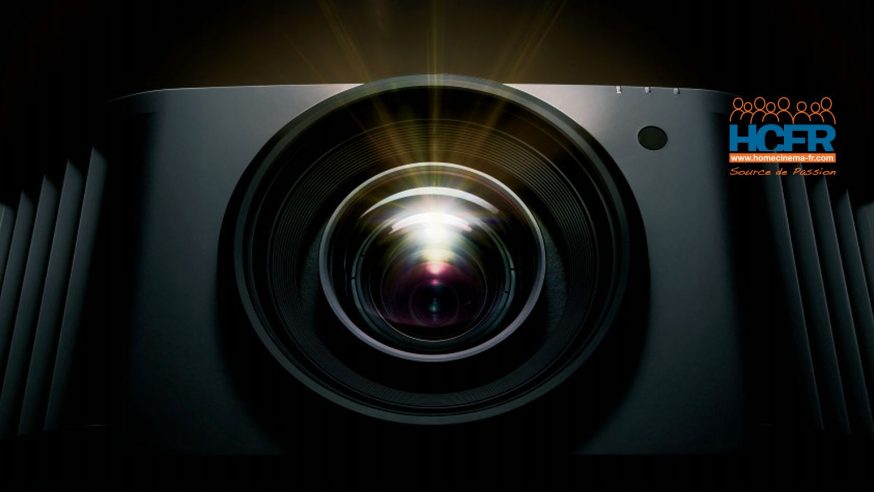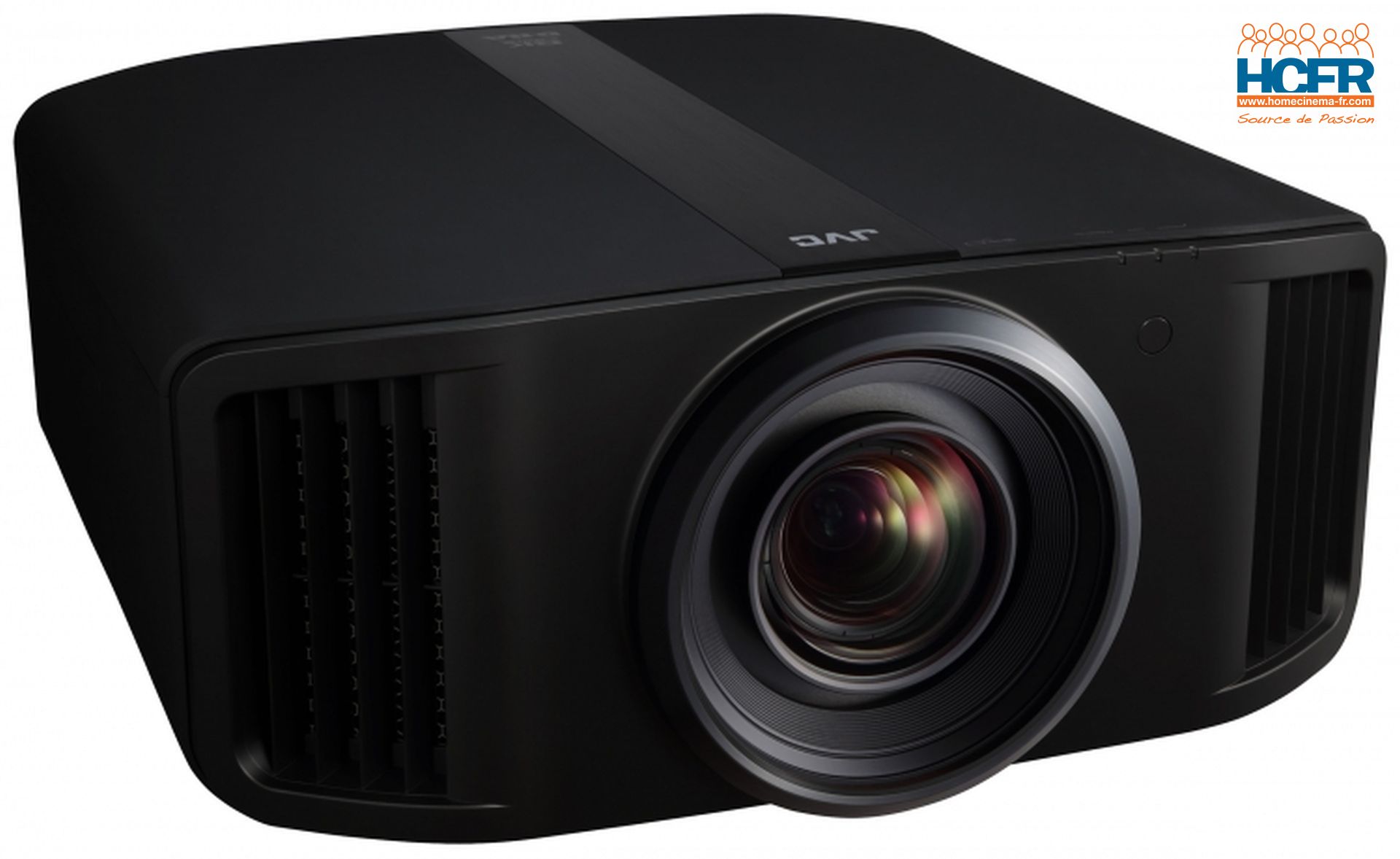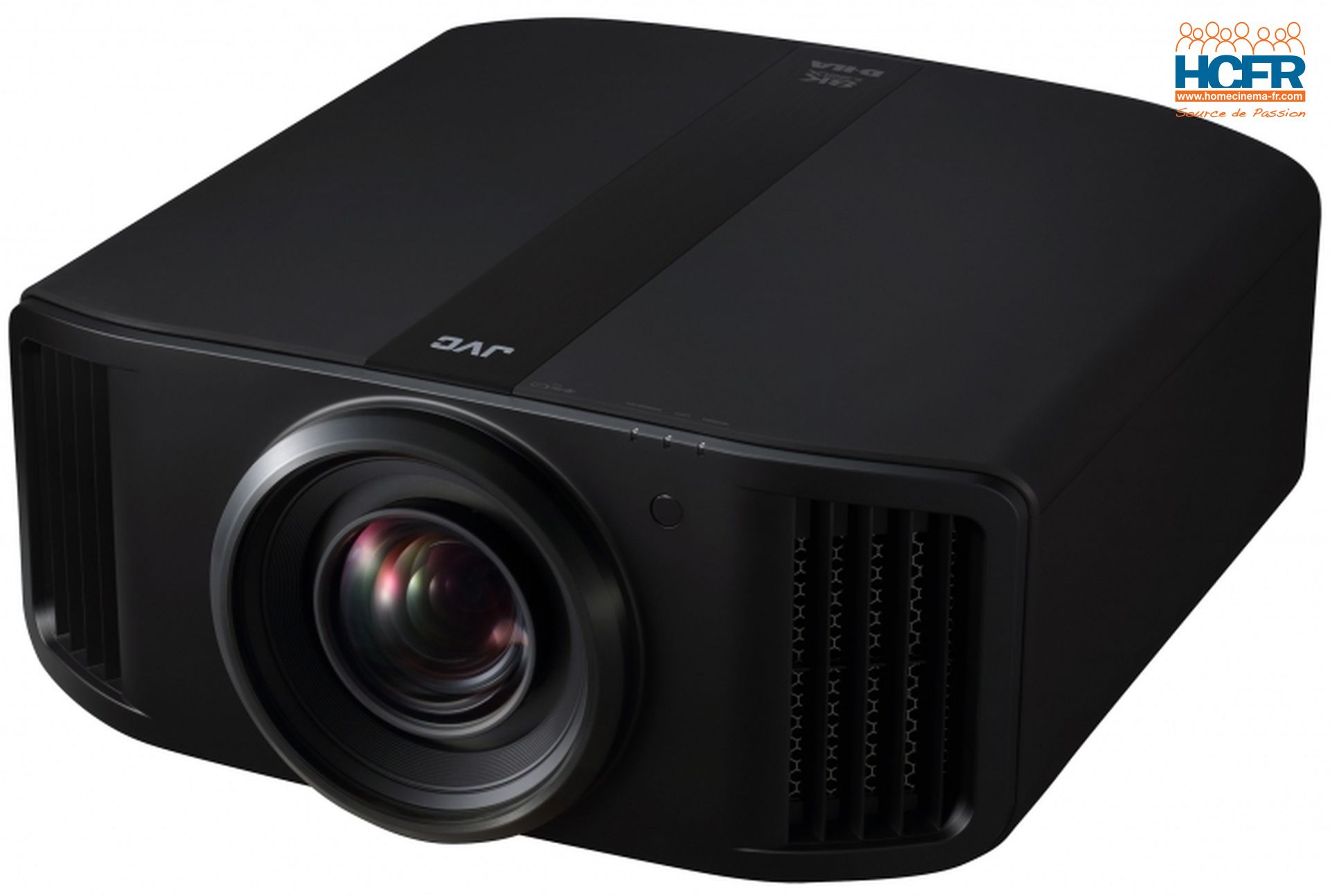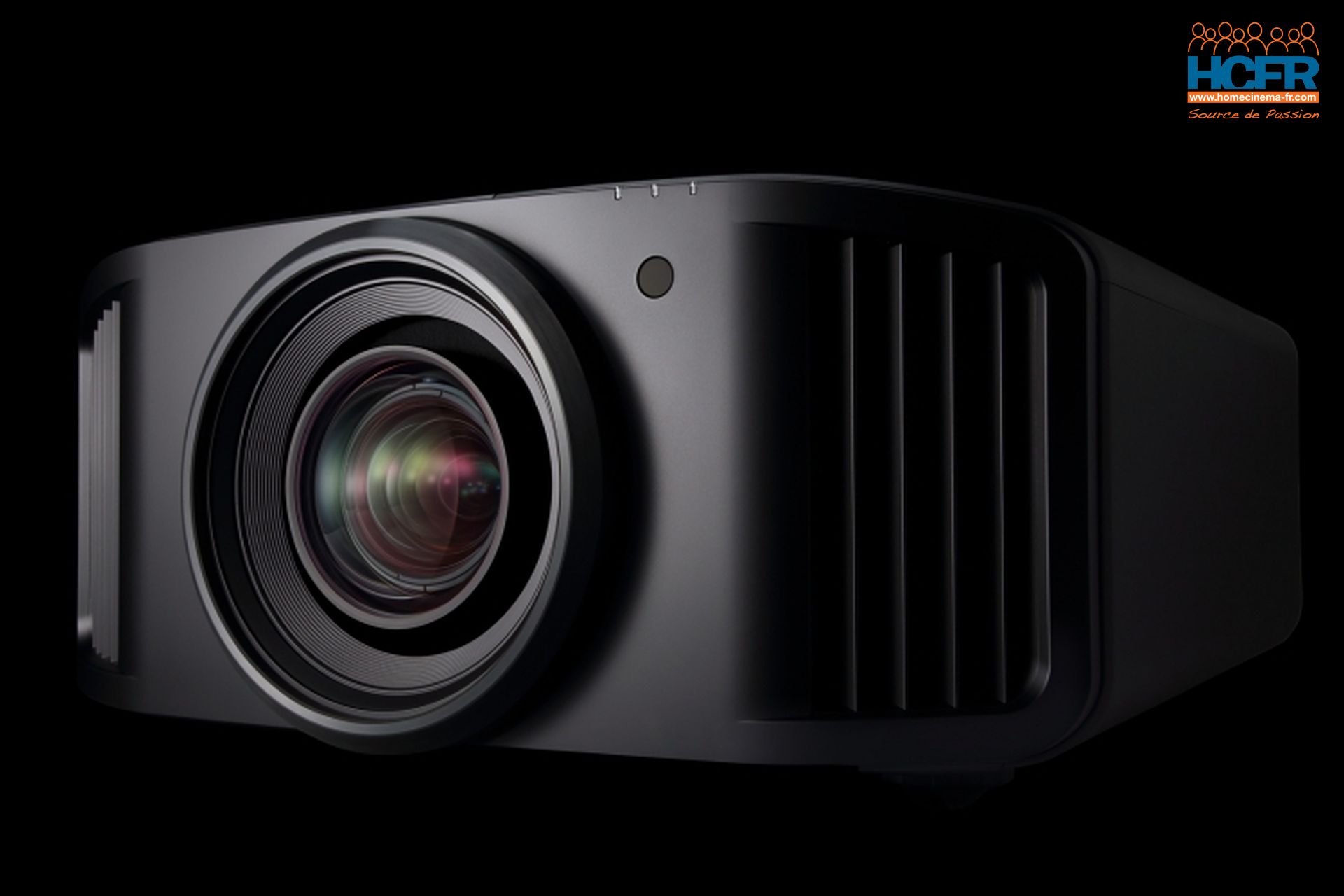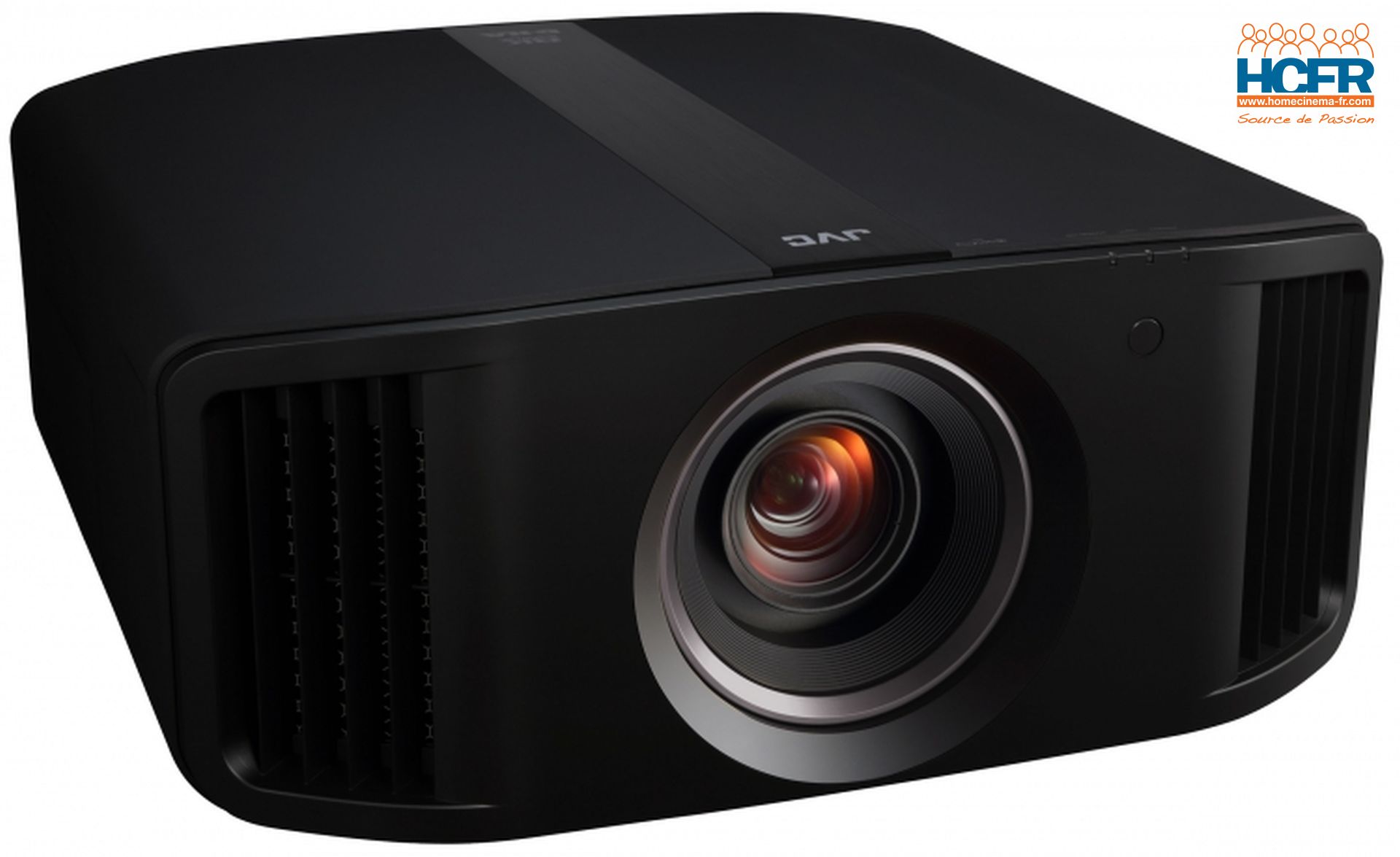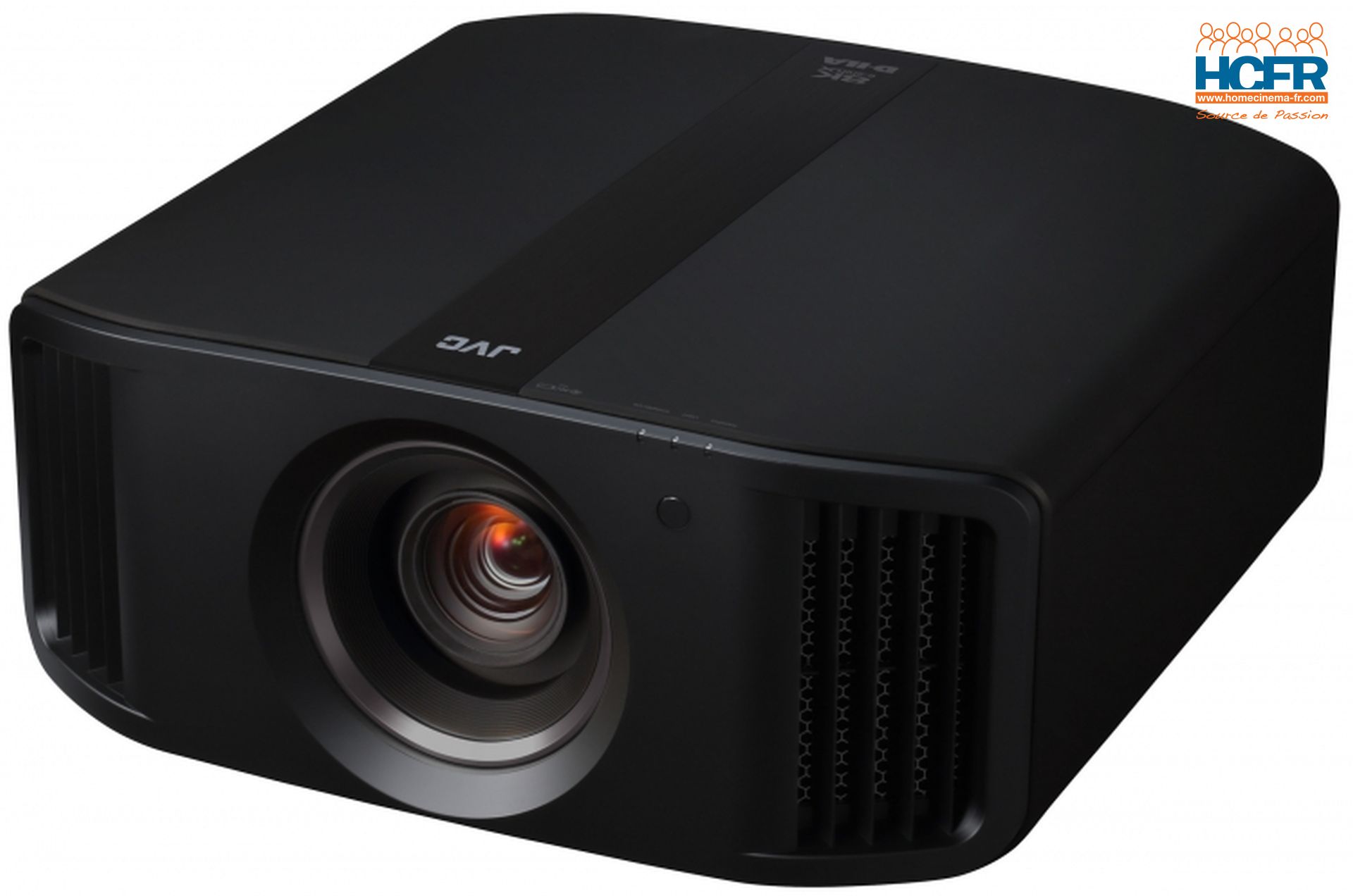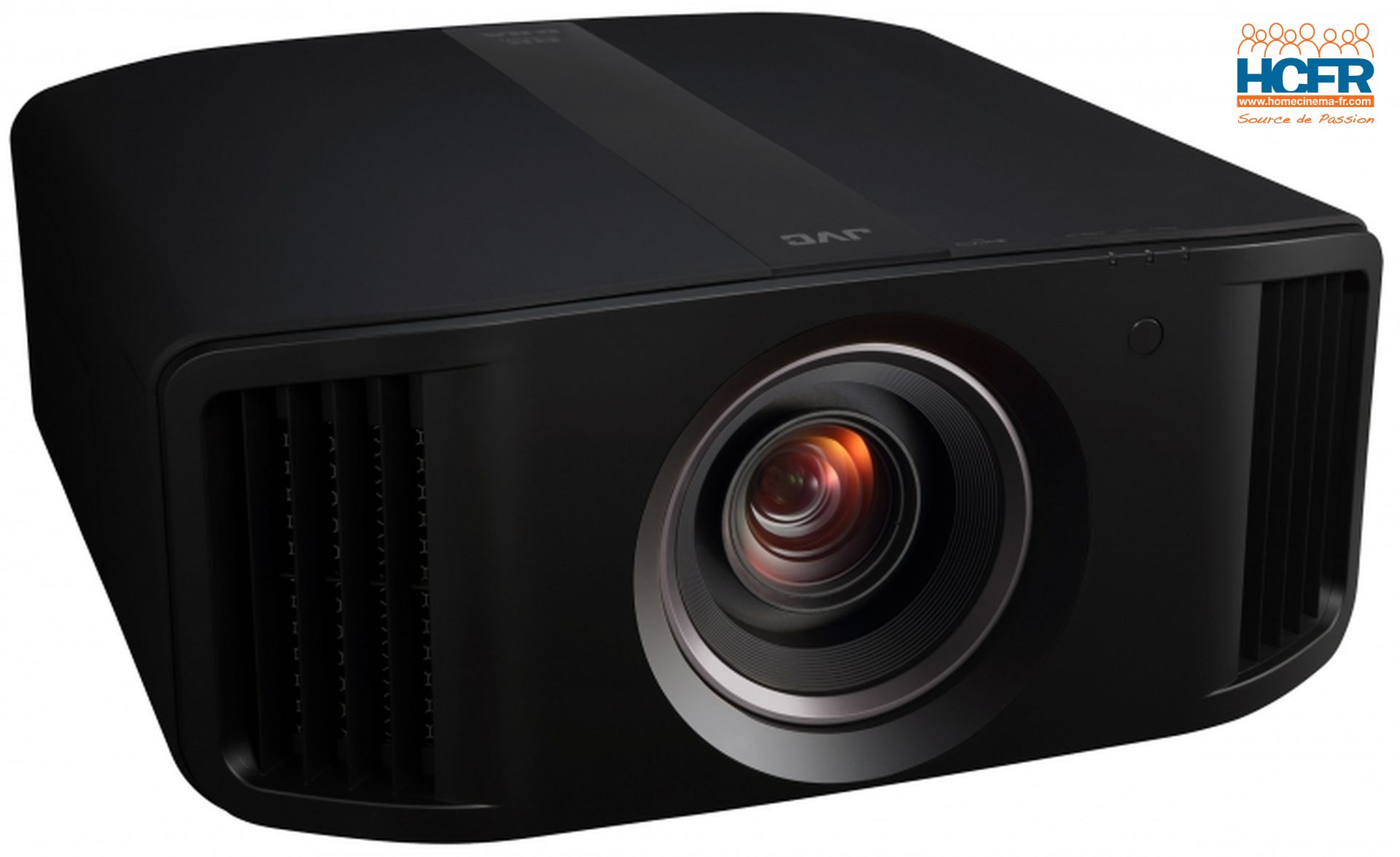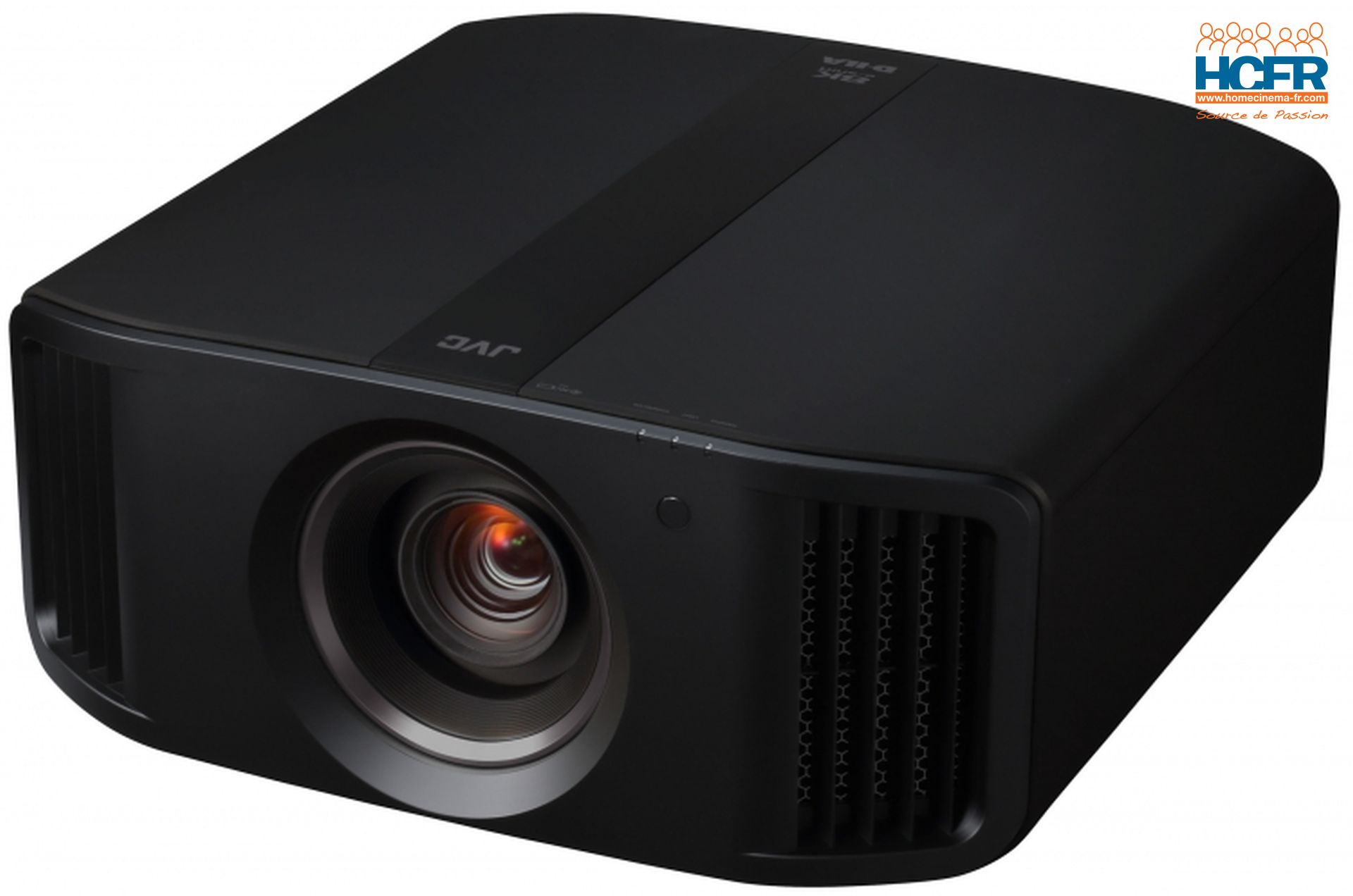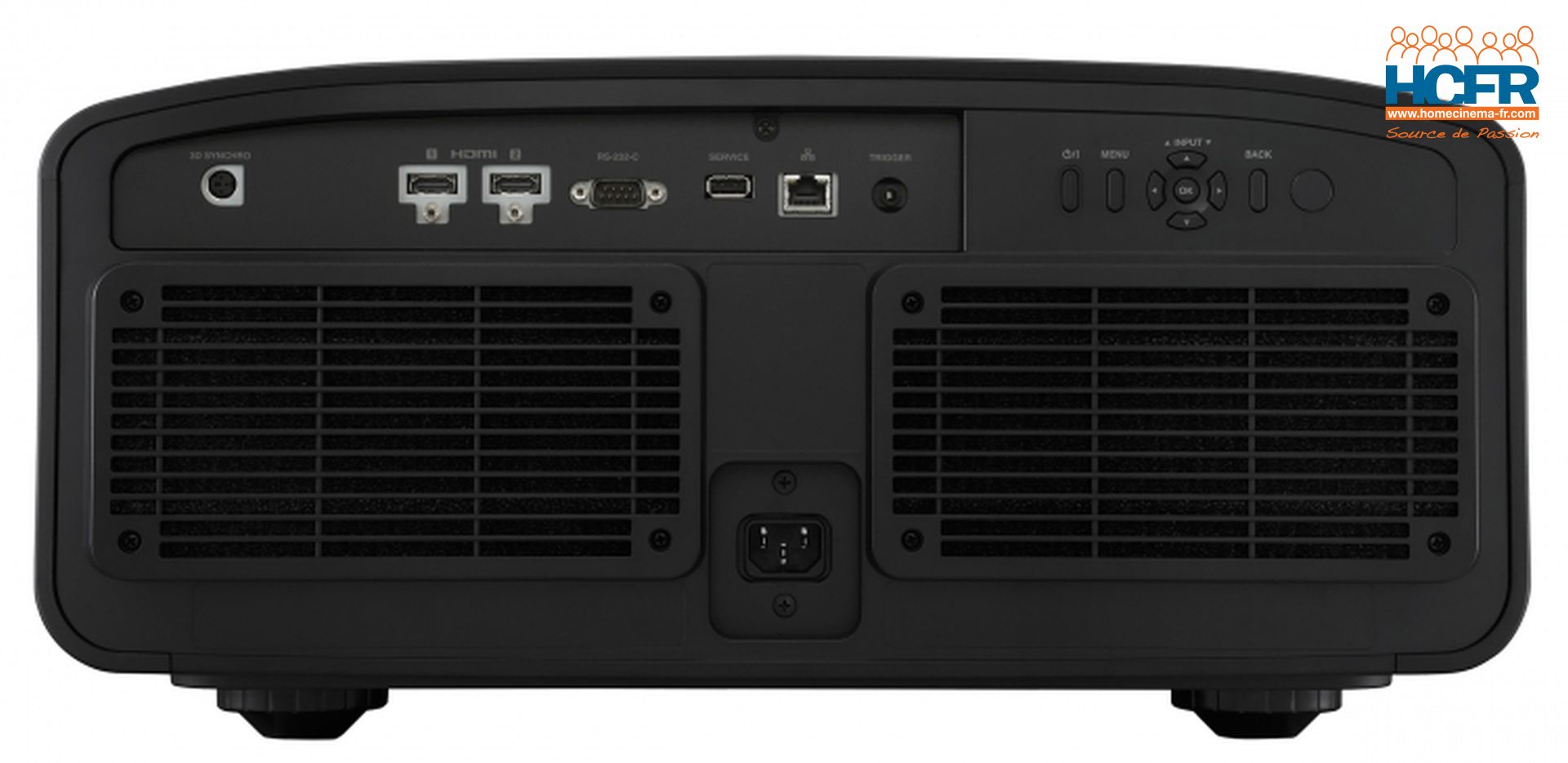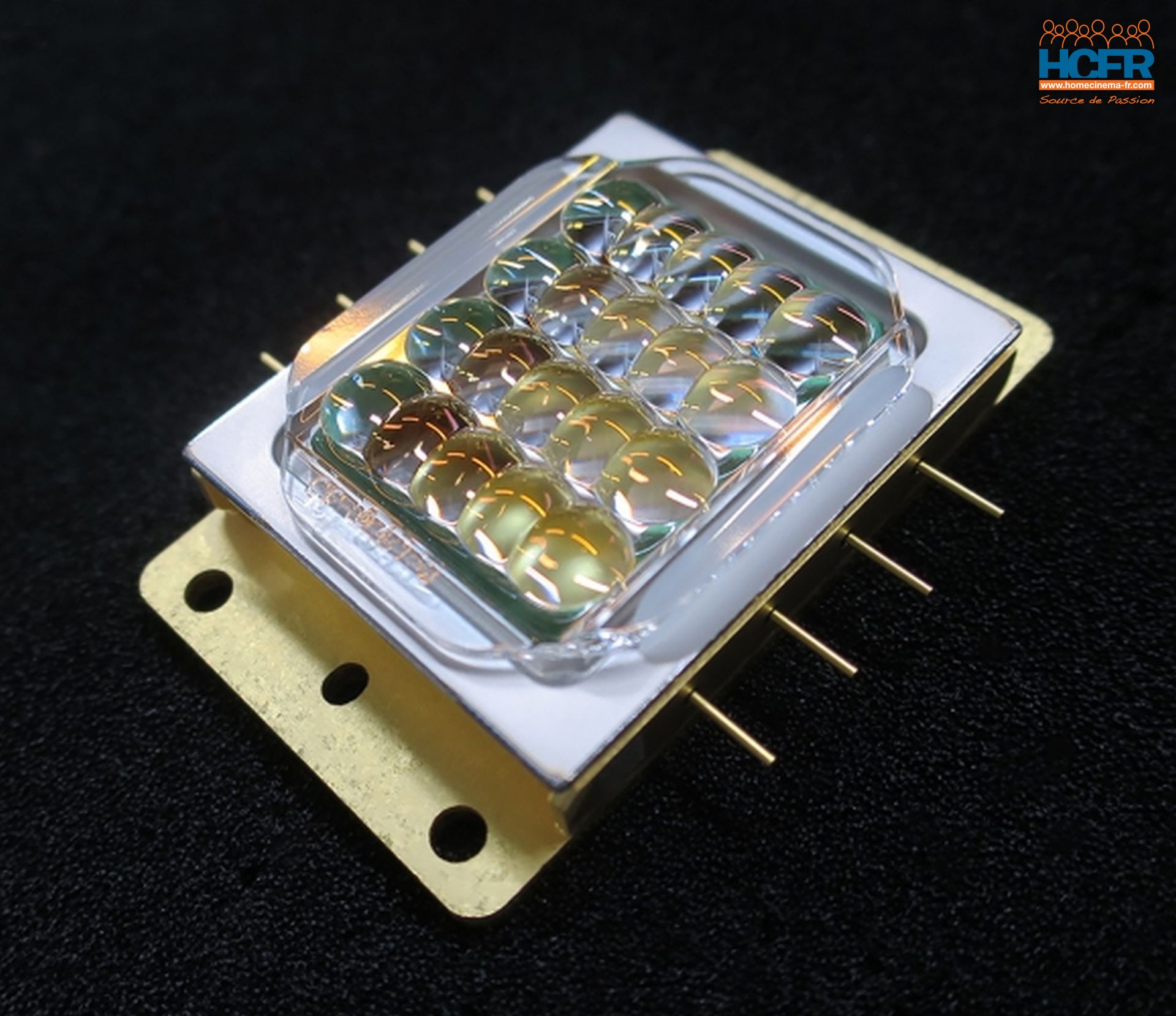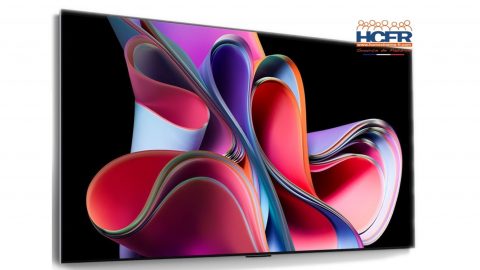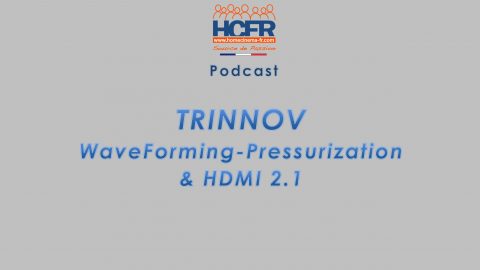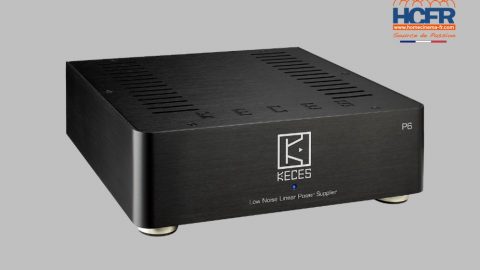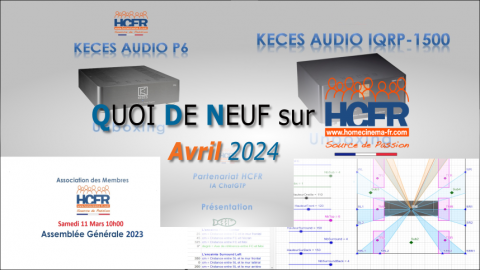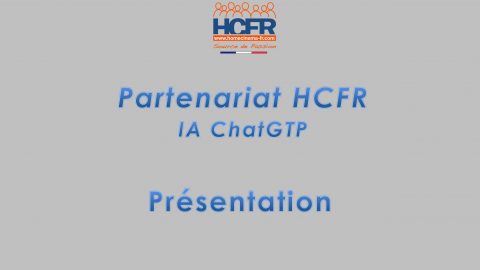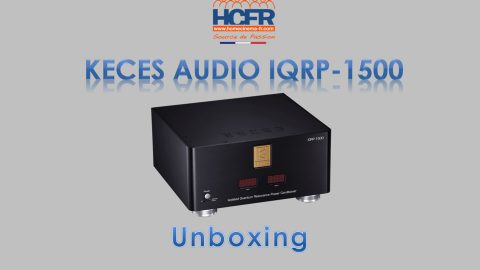News HCFR – JVC présente trois nouveaux projecteurs laser
Initial Communiqué de Presse Anglais adapté HCFR
JVC
présente Trois nouveaux projecteurs laser
DLA-NZ9, DLA-NZ8, DLA-NZ7
dotés du JVC BLU-Escent laser et compatibilité HDR10+
New JVC Laser Projectors Are World’s First With 48Gbps 8K Inputs
Septembre 01, 2021 – An all-new JVC home theater projector line highlights three models boasting a laser light source, and are the world’s first projectors to offer 48Gbps 8K inputs.
The new laser projectors feature new LSIs and JVC’s proprietary 8K/e-shift technology that enables the input and display of 8K high-definition images, while JVC’s BLU-Escent laser light source reproduces images with greater precision and dynamic range on large screens.
The three new JVC laser projectors are available in both the Professional Series and Reference Series lines. They are the Professional Series DLA-NZ9, DLA-NZ8, and DLA-NZ7, and the Reference Series DLA-RS4100, DLA-RS3100, and the DLA-RS2100.
The company’s BLU-Escent laser diode light source was originally available only in JVC’s flagship model, the DLA-RS4500. Now, JVC brings the next generation of this technology to a full line of home theater projectors, offering outstanding dynamic range, exceptional brightness, and long life.
The new laser projectors support 8K60p/4K120p input using a new LSI, which contributed to the evolution of JVC’s proprietary 8K/e-shift technology. This technology achieves resolution close to native 8K by shifting pixels in four directions rather than two, as in the earlier version of e-shift.
The top-of-the-line DLA-NZ9/RS4100 is equipped with a premium 100mm diameter all-glass lens, Ultra-High Contrast Optics for outstanding contrast, and 8K e-shiftX. The DLA-NZ8/RS3100 shares most of the NZ9/RS4100 features, with a 65mm diameter all-glass lens. The DLA-NZ7/RS2100 is a high value model, offering a laser light source, 8K input, and 8K/e-shift at breakthrough pricing.
Key Features
-
The world’s first* home theater projector with 48Gbps 8K60p/4K120p inputs. Newly developed 8K/e-shiftX delivers breathtaking 8K high resolution
*As a home theater projector, as of September 2021** (JVC survey)
1.1 – Dual 48Gbps HDMI inputs with HDCP 2.3 provide the most future proof connectivity and are ideal for the newest generation source devices such as gaming consoles.
1.2 – Newly developed 8K/e-shiftX delivers resolution close to 8K native resolution (DLA-NZ9/RS4100 and DLA-NZ8/RS3100
JVC’s 0.69-inch native 4K D-ILA device has evolved significantly. The original 8K/e-shift technology doubles resolution by shifting one pixel diagonally by 0.5 pixels. The new 8K/e-shiftX uses a 240Hz driver to shift in four diagonal directions (up, down, left, and right). The result is the ability to display 8K content with pixel perfect 8K resolution.
1.3 – LSI for 8K60p/4K120p input and video processing
8K input requires instantaneous processing of an enormous amount of information from input to device output – four times that of conventional 4K input. To achieve this, the latest technology LSIs are installed to ensure stable and high picture quality. This also “future proofs” the new line by offering 8K signal support to ensure long-term use.
In addition, the new projectors also support 4K120p input. Usage of this format is expected to increase in the future, and is highly effective in displaying high frame rate gaming content, etc. It opens up new possibilities for projectors to provide high quality gaming on large screens.
1.4 – 0.69-inch native 4K D-ILA device with improved drive performance
To implement 8K/e-shiftX, which shifts the image in four directions (up, down, left, and right), it is necessary to drive the panel at twice the speed of conventional systems. To achieve this, the D-ILA drive device was improved and it is now possible to display images at a speed equivalent to 240Hz. The device also achieves a native contrast of 100,000:1** while improving the drive performance. For models equipped with a laser light source, an astonishing dynamic contrast of ∞:1 has been achieved in combination with dynamic light source control that automatically controls output.
**For the DLA-NZ9/RS4100. For the DLA-NZ8/RS3100, 80,000:1; for the DLA-NZ7/RS2100
1.5 – All-Glass Lens Capable of Capturing 8K Information
The DLA-NZ9/RS4100 is equipped with a 16-group, 18-element, all-glass, all-aluminum barrel lens. The 100mm diameter lens has a wide shift range of 100 percent up/down and 43 percent left/right, and uses five special low-dispersion lenses that consider the differences in refractive indices between R, G, and B to project high resolution to every corner of the screen, reproducing 8K resolution.
Other models feature a 65mm diameter all-glass lens with 17 elements in 15 groups to deliver high-resolution images that are in focus all the way to the periphery of the screen
-
BLU-Escent laser light source technology achieves both high brightness of 3000lm and a long life of approximately 20,000 hours
The unique BLU-Escent laser light source technology, which uses a blue laser diode as the light source, provides both high brightness of 3,000lm and long life of 20,000 hours. The increased brightness makes it compatible with larger screens and significantly increases the peak brightness during HDR playback. This, together with 8K high-definition, creates a home theater experience like never before.
2.1 – High-power laser diode package
The combination of a high-power laser diode package and a highly efficient optical engine achieves a high luminance of 3,000lm***. In addition, the combination of the D-ILA device, which has a narrow pixel gap and high light utilization efficiency, enables detailed, smooth, and powerful image expression.
***For DLA-NZ9/RS4100. « DLA-NZ8/RS3100 »: 2,500lm, « DLA-NZ7/RS2100 »: 2,200lm
2.2 – High image quality with dynamic light source control
The laser light source uses a laser diode that allows instantaneous control of light output, enabling dynamic brightness adjustment with less delay compared to conventional mechanical apertures. By controlling the laser output according to the brightness of the video scene, it is possible to reproduce images closer to human perception. In addition, ∞:1 contrast is achieved by controlling the output of the laser during hide, signal discrimination, etc.
-
HDR (High Dynamic Range) Content
Support has been added for the HDR10+ format, which uses dynamic metadata. In addition, the HDR10 format used in UHD Blu-ray and streaming, and the HLG (Hybrid Log Gamma) format used in broadcasting are also available.
3.1 – HDR10+ support
With HDR10+, the luminance information for each scene is embedded in the content as metadata, so tone mapping can be performed according to the scene. This makes it possible to faithfully reproduce the HDR images intended by the creators. By comparison, HDR10, the basic standard for HDR playback, has only two pieces of information: MaxCLL (Maximum Content Light Level), which represents the maximum brightness of the content, and MaxFALL (Maximum Frame Average Light Level), which represents the average maximum brightness.
3.2 – JVC’s unique Frame Adapt HDR and Theater Optimizer
JVC’s Frame Adapt HDR performs dynamic tone mapping – either frame by frame, or scene by scene – based on analysis of HDR10 content, while Theater Optimizer automatically performs optimal tone mapping according to the installation environment. 18-bit level gamma processing suppresses tonal gradations in bright areas and blacks in dark areas, and reproduces smooth gradations with high accuracy. Together, these two unique features deliver the best possible HDR image.
-
Ultra-High Contrast Optics further improves the quality of projected images (DLA-NZ9/RS4100, DLA-NZ8/RS3100)
Ultra-High Contrast Optics significantly improves brightness by adopting a more efficient polarization method. In addition, a new optical device that thoroughly eliminates internal unwanted light has been adopted to significantly improve the quality of projected images.
4.1 – Improved prism polarization method to increase light output
Compared to the conventional method, the G (green) component, which contributes to optical brightness, can now be used more effectively, resulting in an increase in optical efficiency of approximately 10 percent.
4.2 – Adoption of a new optical device that thoroughly suppresses unwanted light inside the optical system
The addition of a new device inside the optical system suppresses the return of unwanted reflected light to the projection screen, dramatically improving image quality.
4.3 – Cinema filter delivers vivid color images with DCI-P3 wide color gamut
The cinema filter enables 100 percent of the wide DCI-P3 color gamut. HDR content, as typified by UHD Blu-ray, uses a much wider color gamut than before, so the wide color gamut of DCI-P3 makes it possible to reproduce such content with rich colors, including gradations in the sky and sea, which were previously difficult to reproduce, and contrasts between crimson roses and rows of fresh green trees.
-
Improved accuracy of proprietary Clear Motion Drive image blur reduction technology
JVC’s original image blur reduction technology Clear Motion Drive has improved the accuracy of motion compensation at object boundaries by reviewing the interpolation algorithm. In combination with Motion Enhance, which optimizes the drive of the D-ILA device according to the movement of the image, this technology reproduces 4K images more smoothly.
Other Features
- All models are ISF-certified and can be color-calibrated by ISF-certified engineers.
- The Installation Settings function allows up to 10 types of installation adjustments to be saved and easily recalled. These include lens memory, pixel adjustment, and screen masks. Screen size and gain, and aspect ratios can also be set.
- The auto-calibration function is provided to optimize the optical characteristics that vary depending on installation and usage conditions.
- The Screen Correction Mode corrects color imbalance caused by screen characteristics.
- Rear air intake and front air exhaust design for various installation environments, such as installations close to a wall.
Specifications
| Model | DLA-NZ9 / RS4100 | DLA-NZ8 / RS3100 | DLA-NZ7 / RS2100 | |
| Color | Black | Black | Black | |
| Device | 0.69” 4K D‐ILA Device(4,096×2,160)X3 | |||
| 8K/e-shiftX (4 way) | ✓ | ✓ | – | |
| 8K/e-shift (2 way) | – | – | ✓ | |
| 8K60p input | ✓ | ✓ | ✓ | |
| 4K120p input | ✓ | ✓ | ✓ | |
| Resolution |
8,192×4,320 (8K/e-shiftX) |
8,192×4,320
(8K/e-shift) |
||
| Lens | 2X Optical Zoom 100 mm/All Glass (Motorized Focus & Zoom) |
2X Optical Zoom 65 mm/All Glass (Motorized Focus & Zoom) |
||
| Lens Shift | Vertical 100%, Horizontal 43% (Motorized) |
Vertical 80%, Horizontal 34% (Motorized) |
||
| Image size | 60 ~ 300 inches | 60 ~ 200 inches | ||
| Light Source | BLU-Escent (Laser Diode) | |||
| Brightness | 3,000lm | 2,500lm | 2,200lm | |
| Contrast | Dynamic | ∞:1 | ∞:1 | ∞:1 |
| Native | 100,000:1 | 80,000:1 | 40,000:1 | |
| Ultra-High Contrast Optics | ✓ | ✓ | – | |
| Color Space DCI P3 | ✓ | ✓ | – | |
| Input | HDMI | 2 (48Gbps, HDCP2.3, No support for CEC) | ||
| Output | Trigger | 1 (DC12V/100mA) | ||
| 3D Synchro | 1 (Mini‐Din 3pin) | |||
| Controls | RS‐232C | 1 (Dsub‐9pin) | ||
| LAN | 1 (RJ45) | |||
| Service | Service | 1 (USB Type A)* For firmware updates | ||
| Video Formats | Digital | 480p, 576p, 720p 60/50, 1080i 60/50, 1080p 120/100/60/50/24,
3840×2160p 120/100/60/50/30/25/24, 4096×2160p 120/100/60/50/30/25/24
|
||
| 7680×4320p 60/50/30/25/24 | ||||
| 3D Formats | Frame Packing | 720p 60/50, 1080p 24 | ||
| Side by Side | 720p 60/50, 1080p 60/50/24, 1080i 60/50 | |||
| Top & Bottom | 720p 60/50, 1080p 24 | |||
| Power Consumption | 440W
(Standby: 1.5W Eco: 0.3W) |
420W
(Standby:1.5W Eco: 0.3W) |
||
| Fan Noise | 24dB (Low Mode) | |||
| Power Supply | AC 100-240V、 50/60Hz | |||
| Dimensions in Inches (Width x Height x Depth) | 19-11/16 x 9-7/32 x 20-13/16 | 19-11/16 x 9-7/32 x 19-29/32 | 19-11/16 x 9-7/32 x 19-29/32 | |
| Weight | 55.7lbs | 50.8lbs | 49.5lbs | |
- All specifications and descriptions are preliminary and subject to change.
Accessories
About Trademarks
D-ILA is trademark or registered trademark of JVCKENWOOD Corporation.
HDMI (High-Definition Multimedia Interface) and the HDMI logo are trademarks or registered trademarks of HDMI Licensing.
HDR10+™ logo is a trademark of HDR10+ Technologies, LLC.
All other company names and product names are trademarks or registered trademarks of their respective owners.
Avec une présentation en video :
Galerie photos
Hugo S
HCFR – Septembre 2021
– lien vers le sujet HCFR dédié aux projecteurs laser JVC DLA-NZ7 et DLA-NZ8 : https://www.homecinema-fr.com/forum/projecteurs-uhd-4k/2021-jvc-dla-nz7-nz8-laser-4k-e-shft-x-8k-voir-post-1-t30116417.html
– lien vers le sujet HCFR dédié aux projecteurs laser JVC DLA-NZ9 : https://www.homecinema-fr.com/forum/projecteurs-uhd-4k/2021-jvc-dla-nz9-laser-4k-e-shiftx-8k-voir-post-1-t30116418.html
– Lien vers le sujet HCFR dédié aux échanges initiaux concernant la nouvelle gamme de projecteurs JVC laser : https://www.homecinema-fr.com/forum/projecteurs-uhd-4k/jvc-dla-nouvelle-gamme-laser-on-en-parle-t30115811.html


